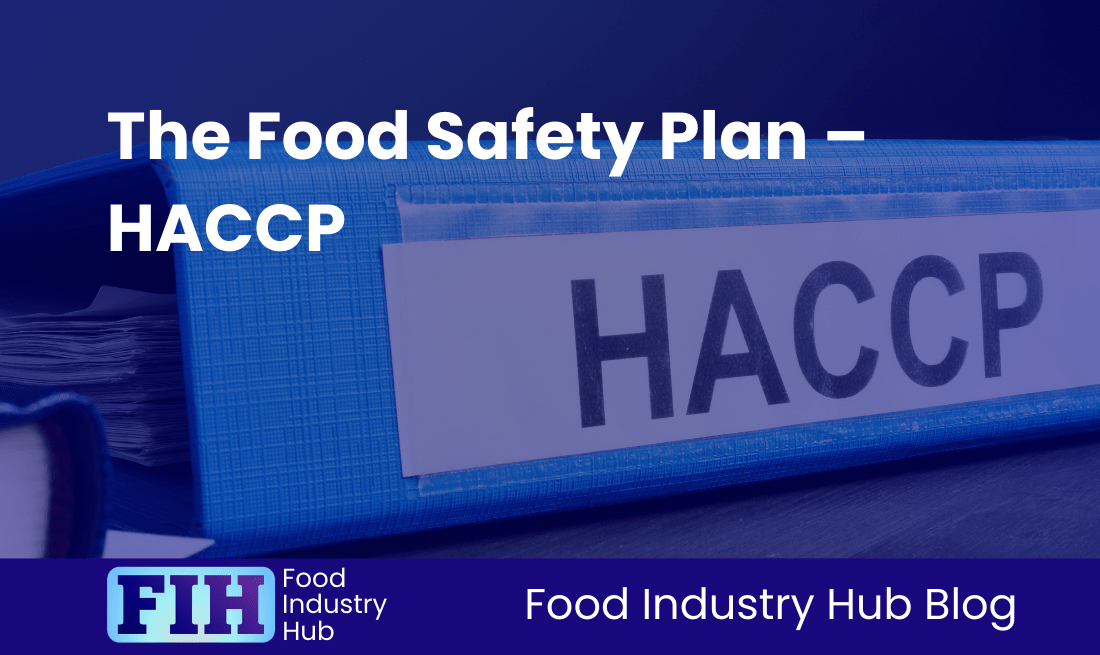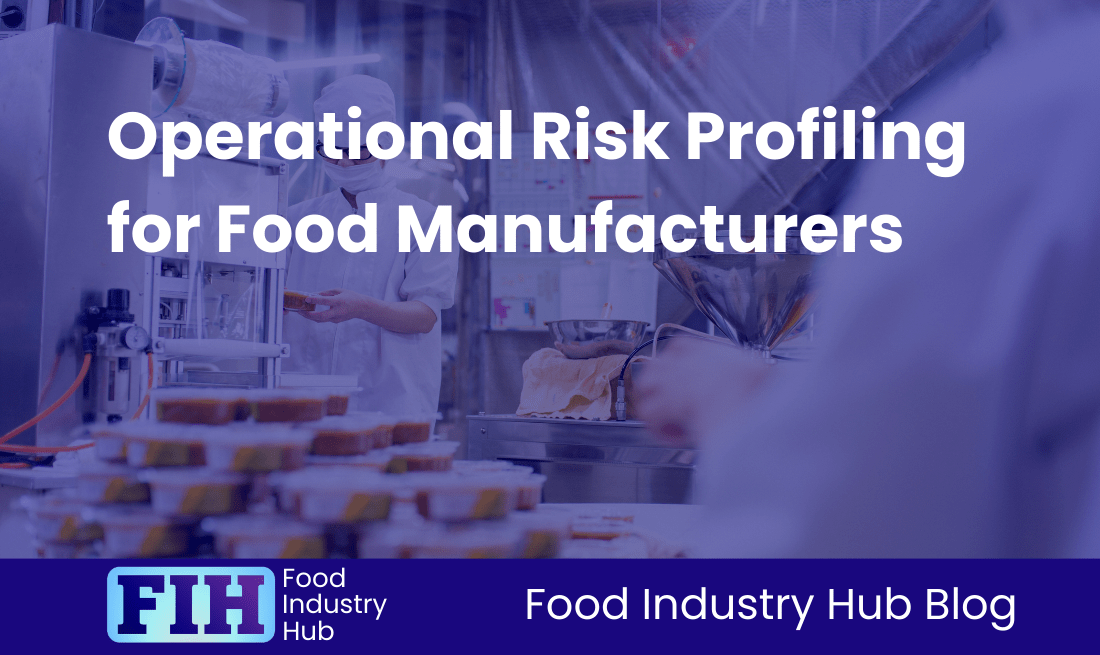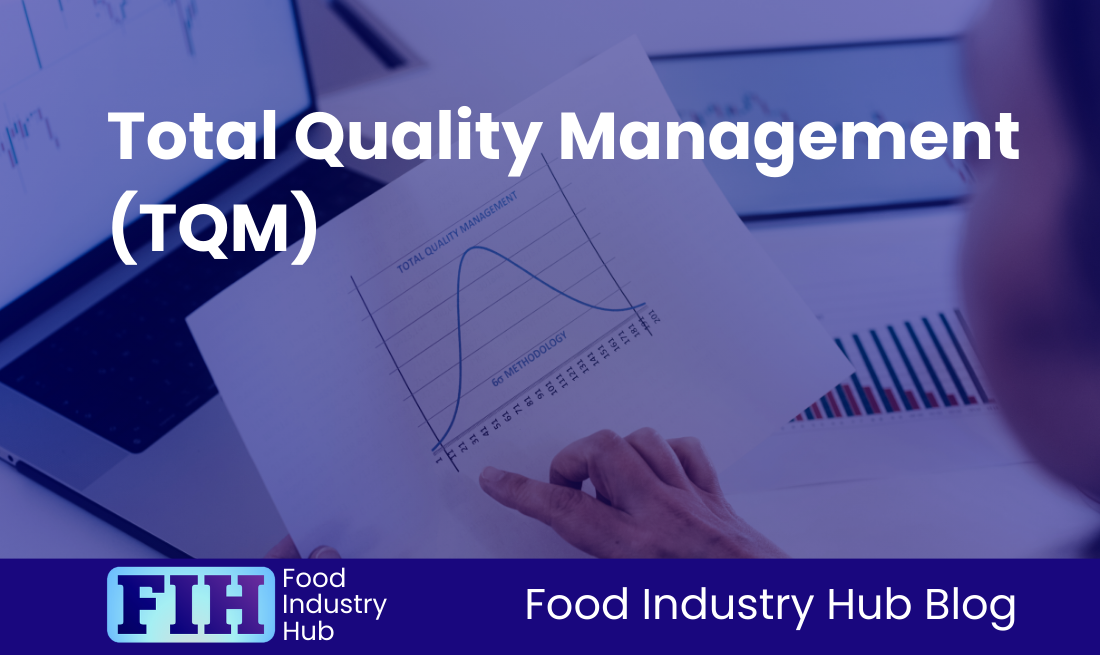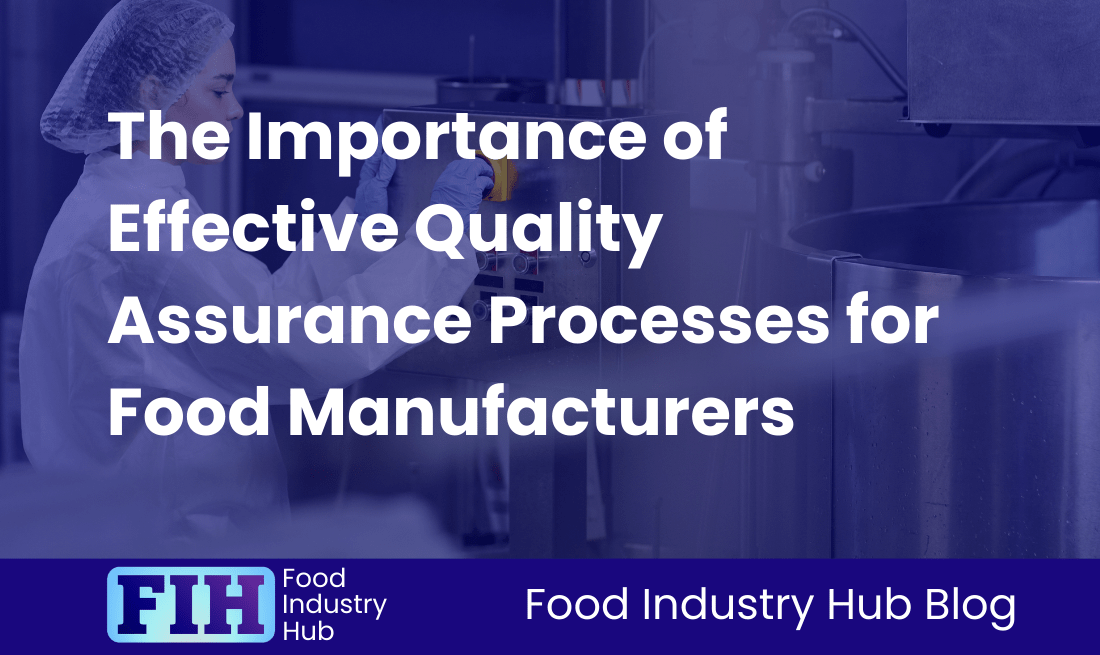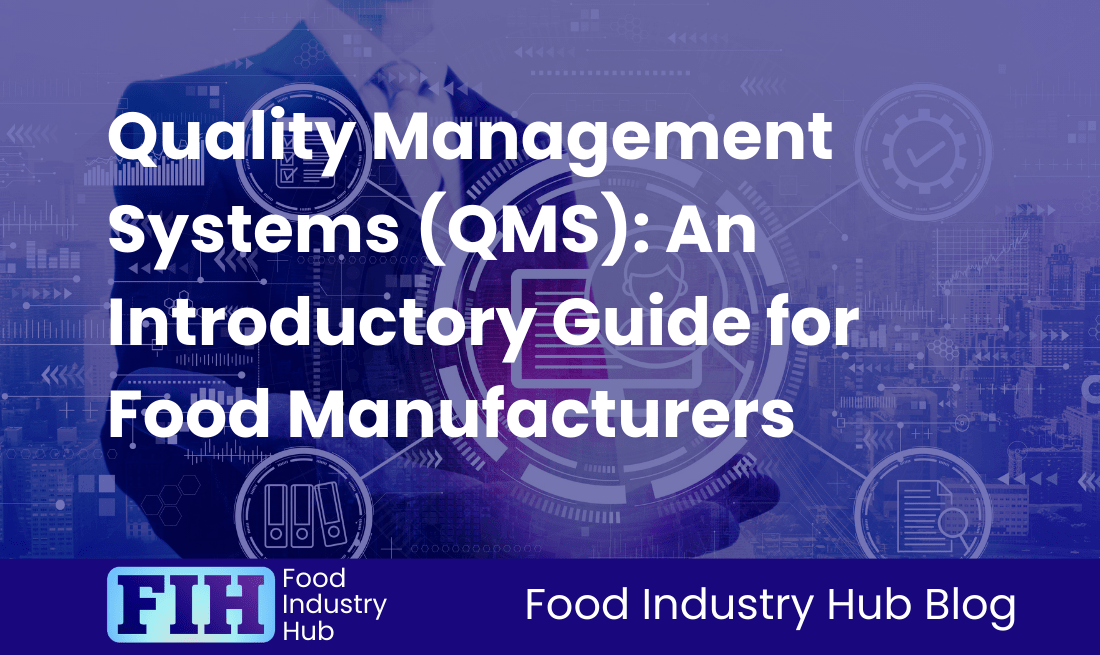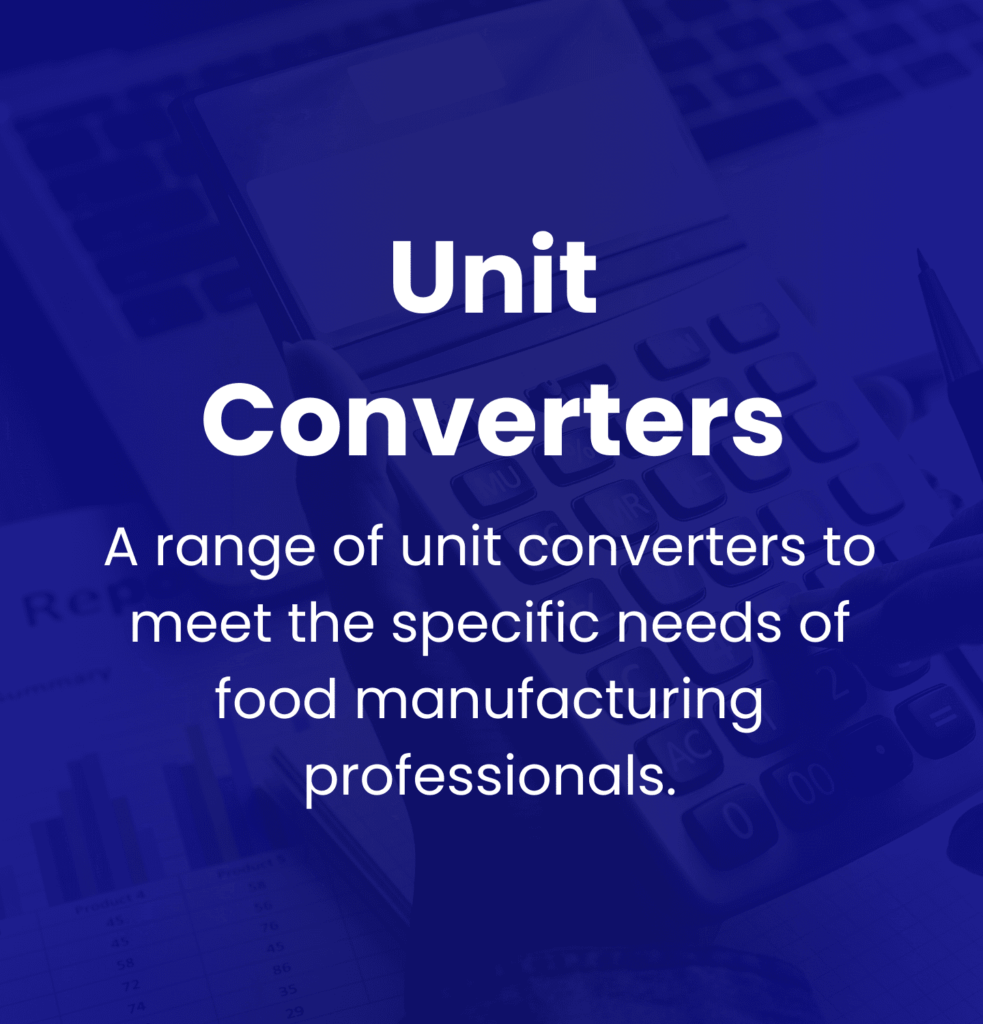Know: Hazard Analysis and Critical Control Points (HACCP)
Introduction
Hazard Analysis and Critical Control Points (HACCP) is a principal component of food safety that has gained international recognition. This science-based system is lauded for its well-organised method of detecting, evaluating, and managing potential risks during food production. Its significant position in food safety procedures has been affirmed by global organisations, such as the World Health Organisation (WHO) and the Food and Agriculture Organisation (FAO). The universal adoption of HACCP is a testament to its effectiveness in the pursuit of public health protection.
Historically, the approach to food safety management was largely reactive – revolving around the examination of the end product to identify contamination. HACCP has played an instrumental role in shifting this method towards a proactive approach that emphasises prevention. This change has allowed businesses to pinpoint and address safety concerns before they turn into credible threats. Consequently, HACCP has not only improved the odds of consumer safety, it has also enhanced confidence in food safety guidelines.
In this article, we will navigate the major themes surrounding HACCP. Initially, we’ll discuss HACCP’s systematic approach, based on its seven underlying principles conceived to successfully manage risks associated with food safety. We will then consider the many types of potential hazards that HACCP addresses, including allergenic, biological, chemical and physical threats. We will touch upon the worldwide endorsement of the HACCP system, emphasizing its role in standardising the safety practices across different domains and supply chains. Complying with HACCP has now become an entry criterion for many markets, making it instrumental not only to safety but also to international business.
Key Takeaways
The use of HACCP is a proactive strategy in managing risks during food production, anticipating and controlling potential hazards. It centres on pinpointing allergenic, biological, chemical, and physical hazards at each production stage, moving the focus away from testing the final product and more towards preventative actions. It increases food safety measures and mitigates the occurrence of foodborne illnesses, which safeguards consumer trust and enhances the operational efficiency of businesses.
Understanding Hazard Analysis and Codex Alimentarius Standards
An imperative aspect of effective HACCP implementation lies in proficiency in hazard analysis, along with the incorporation of Codex Alimentarius standards. Hazard analysis requires systematic assessment of possible risks in food production, ensuring that all allergenic, biological, chemical, and physical risks are acknowledged and aptly managed. The guidelines provided by Codex Alimentarius form the foundation for these analyses, corroborating the utilised practices are in alignment with worldwide food safety management systems. The identification of control points is a pivotal concept, enabling efficient monitoring and control of the identified hazards.
Role of a Multidisciplinary Team in HACCP Implementation
Another significant aspect is the employment of a multidisciplinary team for successful HACCP execution. The integration of various disciplines, such as quality assurance, technical management, production, engineering, and hygiene, is requisite to accommodate all aspects of food safety. This manifold expertise aids the HACCP plan formation, implementation, and periodic modification, confirming it is both pragmatic and reactive to the specific requirements and challenges of the business. Training and proficiency within this team are essential, as every team member’s informed actions contribute greatly to the overall success and integrity of the HACCP methodology.
The Role of Regulatory Compliance
Regulatory Compliance contributes significantly to the soundness of food safety practices. It mandates food enterprises conforms to legal benchmarks and industry best practices. Given that HACCP plans are often lawfully required in many areas, compliance serves the dual purpose of protecting public health and amplifying consumer confidence. By abiding by these guidelines, food businesses can reduce the possibility of recalls and construct a favourable brand image.
Importance of Comprehensive Documentation and Monitoring in HACCP
Thorough Documentation and consistent Monitoring are essential parts of a successful HACCP plan. The process of documentation encapsulates the recording of each step in the HACCP procedure, from hazard identifications to tracking outcomes and actions implemented. These extensive records certify transparency and responsibility which are important for audits and making continuous enhancements in the procedure of managing food safety. Equally, monitoring demands regular verifications that control points universally adhere to pre-set safety conditions.
Emerging Challenges and the Need for Flexibility
The landscape of food manufacturing is continuously changing, introducing fresh challenges and requiring favourable adaptations. As businesses face increasingly complex regulatory obligations, heightened consumer demands, and technological advancements, an ability to adapt becomes a necessity. For staying competitive, businesses should carry the flexibility of modifying their HACCP plans to effectively incorporate these alternations. Comprehending and implementing these evolving strategies will be instrumental in managing forthcoming challenges and preserving high standards in food safety.
Food Industry Hub Management Systems can significantly boost the effectiveness of your food safety and quality management system, leading to improved confidence and elevated quality assurance throughout your operations.
Fundamentals of HACCP
Detailed Examination of HACCP’s Risk-Based Approach to Food Safety
HACCP, which stands for Hazard Analysis and Critical Control Points, represents a systematic and risk-based methodology specially crafted to augment food safety. It fulfils this role by identifying, assessing, and controlling potential hazards endemic in the food production process. The model underscores the importance of prevention, rather than reaction, cementing its place as a cornerstone of contemporary food manufacturing schemes. Put simply, the utilisation of HACCP principles within food manufacturing environments dramatically reduces the risk of foodborne illness, thereby promoting consumer health and ensuring regulatory compliance.
HACCP designates four primary types of hazards:
- Allergenic Hazards: Allergens (sometimes grouped into chemical hazards) are substances which can pose disproportionate health risks to consumers by illiciting an immune response.Different allergens are recognised in different markets. [Source: FARRP].
- Biological Hazards: This group includes harmful microbes, such as bacteria, viruses, moulds, and parasites, that are known to cause foodborne illness. Renowned culprits include Salmonella, E. coli, and Clostridium botulinum, all of which have been linked to significant outbreaks [Source: EC].
- Chemical Hazards: These dangers stem from contaminants, for instance, pesticide residues or food additives and cleaning agents. A thorough hazard assessment is imperative, as it determines safe levels of these substances in food products [Source: EC].
- Physical Hazards: This category covers foreign objects, such as glass, metal fragments, or stones, which may inadvertently contaminate food during processing, thereby posing a threat to consumer safety.
The proactive aspect of HACCP requires that food manufacturers focus on these hazards at all stages within the production cycle. The identification of critical control points (CCPs) — places where prevention measures must be implemented — augments the overall food safety, operational efficiency, and alignment with food safety regulations.
Systematic Framework and Global Adoption of HACCP
The implementation of HACCP is based on seven well-established principles:
- Hazard Analysis: Identifying potential hazards associated with food processes.
- Determining Critical Control Points (CCPs): Devising points at which controls can be applied to prevent or eliminate hazards.
- Establishing Critical Limits: Setting minimum or maximum parameters to ensure that any hazard is controlled effectively.
- Monitoring Procedures: Regular check-ups of CCPs to ensure they comply with established critical limits.
- Corrective Actions: Crafting response measures for instances where monitoring checks reveal a CCP is not properly regulated.
- Verification Procedures: Confirming the functional efficiency of the HACCP system through the assessment of both implementation and operational success.
- Record Keeping: Ensuring a comprehensive archival system to keep track of all procedures, monitoring checks, and corrective actions implemented during HACCP execution.
On a global scale, HACCP is appreciated as a fundamental standard in food safety management systems. Influential bodies, including the World Health Organisation (WHO) and the Food and Agriculture Organisation (FAO), have endorsed the use of HACCP across food production industries, thereby promoting uniform food safety practices [Source: EHACCP]. Many nations have adopted HACCP principles in their regulatory frameworks — particularly within meat and seafood processing sectors — thereby amplifying public health protections.
Key Concepts and Terms in HACCP
Hazard Analysis and Its Importance
Hazard analysis is a key initial step in the HACCP process, which prioritises the identification and evaluation of potential hazards within the food production environment. This form of analysis aids in providing a comprehensive understanding of the specific hazards present, which in turn enables manufacturers to implement effective controls to mitigate these risks. This approach, implemented from the onset, significantly improves food safety across the entire production chain [Source: USDA].
Role of Codex Alimentarius Standards
The Codex Alimentarius Commission is instrumental in outlining global food safety standards, inclusive of HACCP. These specifications aid in the implementation of HACCP by providing a comprehensive set of rules to guarantee that safety practices match international benchmarks. This approach bolsters consistency and customer protection across different nations, thus facilitating international food trade.
HACCP’s Complementary Role in Food Safety Management Systems (FSMS)
HACCP is a core component of broader Food Safety Management Systems (FSMS), which comprises various organisational protocols and procedures designed to maintain food safety. While FSMS encapsulates extensive management practices such as Good Manufacturing Practices (GMP) and sanitation standards, HACCP specifically targets food safety risks throughout the process flow. This level of integration not only enhances aggregate food safety but also propels operational efficiency, thereby ensuring that food manufacturers meet regulatory requirements and consumer expectations in a comprehensive manner.
The Seven Princliples of HACCP
HACCP (Hazard Analysis and Critical Control Points) symbolises a systematic methodology employed within the food manufacturing sector. This approach aims to recognise and control hazards that may compromise food safety. It’s composed of seven distinct principles:
1. Conduct a Hazard Analysis
Hazard analysis forms the cornerstone of the HACCP process. It centres around identifying biological, chemical, and physical hazards that could result in illness or injury if not competently controlled. This multifaceted procedure encompasses the identification and evaluation of potential hazards, leading to the establishment of control measures. The analysis covers a broad spectrum of elements throughout the production chain, from procuring raw materials to dispatch of finished products. A rigorous hazard analysis not only highlights potential risks but also guides subsequent processes of the HACCP plan, ensuring that all pertinent hazards are efficiently managed [Source: FDA]. [Source: USDA].
2. Determine Critical Control Points (CCPs)
Critical Control Points indicate specific stages in the food production cycle where control measures can be enforced to prevent, eradicate, or reduce hazards to acceptable degrees. Discerning CCPs is crucial for efficient risk management as they represent stages in which distinct actions can substantially reduce or remove hazards. For example, temperature regulation during food preparation or pasteurisation is considered a typical CCP. More often than not, identifying various CCPs becomes necessary to manage a singular hazard, guiding food manufacturers to concentrate their resources on the most essential facets of food safety [Source: Food Industry Executive].
3. Establish Critical Limits
Critical limits represent defined parameters that must be adhered to at each CCP to guarantee product safety. These may include values related to temperature, pH, time, or other relevant factors. Designating clear critical limits is crucial because it offers a reference for monitoring processes and sets the conditions that need to be maintained. Should critical limits be exceeded, specific corrective actions must be implemented to return to safety protocols.
4. Establish Monitoring Procedures
Monitoring encompasses a systematic framework for observing CCPs to ensure they stay within set critical limits. This procedure is crucial for detecting potential deviations early in the process and enables swift corrective actions. Responsibilities for monitoring must be precisely defined—identifying who will conduct the checks, how often they will occur, and what measurements should be recorded. Assigning dedicated personnel ensures both compliance and accountability, supporting the maintenance of food safety throughout production [Source: FDA].
5. Establish Corrective Actions
Corrective actions represent procedures that must be applied when monitoring indicates that a CCP deviated from its critical limits. These actions are developed to gain control of the situation, manage the affected product, and tackle the cause of the deviation to prevent a repeat occurrence. A robust corrective action framework enhances food safety assurance, ensuring affected products do not reach the consumer while any changes to the process are thoroughly documented in the HACCP plan.
6. Establish Verification Procedures
Verification involves a series of activities developed to affirm that the HACCP system is functioning as planned. It includes reviewing monitoring records, conducting audits, and testing to guarantee that controls are effective in managing hazards. Regular verification activities validate the entire HACCP plan, affirming its scientific soundness and effectiveness in controlling food safety risks. Verification should not be a one-off event but a continuous process contributing to ongoing improvements in food safety practices.
7. Establish Record-Keeping and Documentation Procedures
Comprehensive record-keeping is crucial for demonstrating compliance with regulatory standards and facilitating audits. Detailed records should include CCPs, established critical limits, monitoring procedures, corrective actions, and verification activities. Accurate and thorough documentation not only supports internal quality assurance processes but also offers transparency and accountability. In the event of an outbreak or a compliance issue, these records provide indispensable evidence of due diligence in food safety management.
Contribution of Each Principle to a Reliable Systematic Approach to Food Safety
Each HACCP principle combines to constitute a proactive, systematic approach to food safety management. This includes:
- Proactive Hazard Management: By emphasising on early hazard analysis and control at specific points, it helps food manufacturers to tackle safety concerns before they progress.
- Focused Monitoring and Control: By setting clear monitoring processes it ensures constant supervision, curtailing the advancement of potential threats.
- Response Mechanisms: Corrective actions are readily available to respond rapidly to deviations, safeguarding consumers and preserving safety standards.
- Documented Accountability: Comprehensive record-keeping encourages transparency, aiding audits, and compliance checks, while endorsing commitment to food safety.
Understanding Key Concepts in the HACCP Principles
Critical Control Points (CCPs) and Critical Limits
Critical Control Points (CCPs) represent specific stages in food production where effective controls can significantly mitigate hazards. Examples of these points include cooking processes, refrigeration, and final product packaging [Source: University of Nebraska – Lincoln].
Critical Limits are definitive values that must be achieved at each CCP to guarantee food safety. These limits are established based on scientific evaluations and regulatory guidelines, assisting monitoring personnel in ensuring that safety protocols remain intact.
Synergy Among the Seven Principles
The synergistic relationship among the seven HACCP principles is essential for an integrated food safety management approach. For instance, the insights from hazard analysis directly guide the identification of CCPs, while setting critical limits outlines the operational boundaries for effective monitoring. Viewing monitoring, corrective actions, and verification as a comprehensive system promotes consistent compliance and improvement within the dietary safety guidelines.
This integrated approach reduces risks related to food production and aligns with regulatory expectations, boosting confidence within the industry. The effective implementation of HACCP principles creates a resilient system ensuring food safety at each stage of manufacture.
Sign-up for the Food Industry Hub Mail Service
We regularly produce new content for food industry professionals, and the Food Industry Hub Mail Service is the best way to stay up to date with the latest additions.
Signup today to be added to the Food Industry Hub mailing list.
Strategies for HACCP Implementation
Effective implementation of the Hazard Analysis and Critical Control Points (HACCP) system within the food manufacturing industry rests on several key strategies: assembling a multidisciplinary team, effectively using process flow diagrams, and incorporating prerequisite programmes such as Good Manufacturing Practices (GMPs). This section serves as an in-depth guide on these key aspects:
The Vital Role of a Multidisciplinary Team
The formation of a HACCP team is a pivotal initial step in crafting a HACCP plan. This team should be diverse, consisting of individuals with experience in production, sanitation, quality assurance, and food microbiology. By including personnel familiar with the facility’s unique operating conditions, the resultant plan is effectively tailored to the facility. Teamwork also significantly bolsters compliance and promotes a culture of food safety. As noted by the United States Department of Agriculture (USDA), the insights of those with firsthand knowledge of the processes can help uncover potential hazards that could be overlooked in the initial assessments [Source: USDA].
Effective Utilisation of Process Flow Diagrams
Process flow diagrams, integral for accurate hazard identification within the HACCP framework, provide an overview of all steps in the manufacturing process, from raw material intake to final product distribution. They help identify areas where control is essential and facilitate team discussions on food safety measures. The accuracy of these diagrams is paramount, as they must synchronise with actual operations to ensure relevance and effectively guide the hazard analysis phase.
Incorporation of Prerequisite Programmes
Prerequisite programmes, such as GMPs and Sanitation Standard Operating Procedures (SSOPs), build the foundational hygiene and control measures that support HACCP by managing cleanliness, employee hygiene, equipment maintenance, and supplier practices. With these prerequisites in place, the risk of contamination is minimised, fortifying the effectiveness of HACCP by reducing the chance of hazards arising in the first place.
A Comprehensive Guide to Implementing a HACCP Plan
Here are the primary steps to implement a successful HACCP plan within food manufacturing:
- Preliminary Tasks: Begin by assembling a HACCP team, describing the product, and identifying its intended use. From there, develop an in-depth flow diagram of the process and crosscheck it against actual operations to ensure the HACCP plan reflects the production’s reality.
- Hazard Analysis: Conduct a comprehensive hazard analysis to identify potential biological, chemical, and physical hazards at each process step. This analysis should include an assessment of risks based on severity and likelihood.
- Establishing Critical Control Points (CCPs): Use the hazard analysis to determine CCPs and set critical limits for each CCP to ensure effective hazard management.
- Monitoring and Corrective Actions: Implement procedures to continually monitor CCPs and establish corrective actions for instances where monitoring indicates a loss of control. This proactive approach enables instant attention to deviations, preserving food safety.
- Verification and Documentation: Develop verification procedures to validate the efficacy of the HACCP system and maintain thorough records to demonstrate compliance with both internal and regulatory standards.
By harnessing these strategies along with prerequisite programmes, food manufacturers can execute HACCP plans to effectively enhance food safety and meet regulatory obligations.
Global Regulatory Frameworks and Compliance with HACCP
Examination of Food Safety Regulations across the UK, EU, and US
Regulations for food safety around the globe are progressively embracing the principles rooted in Hazard Analysis and Critical Control Points (HACCP), underlying a shared commitment to a more proactive approach to managing food safety issues.
In the United States, the major leap toward a more preventative, risk-based philosophy is marked by the 2011 Food Safety Modernization Act (FSMA). This act mandates for food manufacturers to implement Hazard Analysis Risk-Based Preventive Controls (HARPC), complementing the traditional HACCP elements. More specifically, HARPC obliges for food safety plans custom-made to address particular hazards in their operations. A similar approach is adopted by the Food Safety and Inspection Service (FSIS) in the form of a HACCP-based model that does not strictly impose prescriptive regulations and allows establishments to safely innovate [Source: Penn State Extension].
In the European Union (EU), the General Food Law Regulation (EC) No. 178/2002 serves as an anchor for food safety laws, enforcing food businesses to incorporate HACCP systems. This legislation stresses the importance of consumer protection established on the principles of transparency and traceability, with local authorities responsible for enforcing compliance, conducting inspections, and providing guidance. This stress on HACCP has spurred EU members to adopt food safety management systems tailored to the specific risk profiles of varied food sectors.
In the United Kingdom (UK), the Food Safety Act 1990, followed by the Food Hygiene Regulations 2013, play a principal role in food safety regulation. These frameworks advocate for HACCP as an effective methodology for managing food safety risks. Local Environmental Health Officers (EHOs) play key roles in enforcing compliance, promoting a risk-based approach that fosters cooperation among businesses to meet safety standards.
Overview of Current Regulatory Trends and Their Implications for the Food Manufacturing Industry
The food manufacturing industry currently faces several influencing regulatory trends that pose to redefine the dynamics of compliance. One notable trend is the heightened focus on preventive controls. Several regulatory frameworks in the US and the EU mandate for preventative measures such as HACCP and HARPC, which centre around identifying and handling risks before they culminate. This anticipatory stance is expected to significantly improve food safety outcomes.
The evident integration of technology into food safety practices serves as another key trend. Advanced technologies offer enhanced monitoring and management of safety hazards, aligning with HACCP principles. Tools using data analytics and real-time monitoring systems are emerging to streamline compliance processes and improve transparency in the supply chain.
The movement towards the harmonisation of food safety standards across borders is another current trend which has the potential to boost international trade. The uniform adoption of HACCP standards across a range of jurisdictions not only elevates local regulatory compliance but also eases the process of market entry on a global scale for food manufacturers. By adhering to such standardised frameworks, companies can more effectively navigate the complexities of international food safety laws.
Key Terms in Regulatory Frameworks
Explanation of Food Hygiene Regulations 2013 and FSIS Generic Models
The Food Hygiene Regulations 2013 in the UK mandate food businesses to exert systematic procedures to ensure food safety, specifically emphasising the incorporation of HACCP principles. Compliance requires maintaining rigorous hygiene and accurately documenting processes to facilitate ongoing adherence to regulations. In parallel, the US FSIS’s implementation of HACCP necessitates meat and poultry operators to develop written safety plans that outline specific measures to curtail food safety hazards [Source: FSIS].
Understanding How HACCP Principles Support Compliance with Global Food Safety Regulations
By offering a firm structure for identifying and controlling potential risks within food production, HACCP principles play an essential role in achieving compliance with international food safety regulations. To recap, these principles are comprised of seven foundational elements:
- Conducting a Hazard Analysis: Identify potential hazards within food production and processing environments.
- Identifying Critical Control Points (CCPs): Determine the stages where control measures are significant to eliminate, or reduce hazards to safe levels.
- Establishing Critical Limits: Set measurable parameters defining acceptable safety levels at each CCP.
- Establishing Monitoring Procedures: Implement consistent monitoring systems at CCPs to maintain compliance with critical limits.
- Establishing Corrective Actions: Define the procedures to follow when deviations from established critical limits are detected.
- Verification: Regular checks to ensure HACCP systems are functioning effectively.
- Record-keeping: Keep comprehensive documentation of the implementation and ongoing evaluation of HACCP principles.
Adhering to these principles allows food manufacturers to demonstrate compliance with both national and international food safety legislation, setting the groundwork for consumer trust and enhancing market opportunities.
Risk Assessment and Mitigation Strategies in HACCP
Benefits of the Severity-Likelihood Matrix for Effective Risk Assessment
The Severity-Likelihood Matrix is an essential tool within HACCP (Hazard Analysis and Critical Control Points), aiding in the evaluation of food safety risks during the manufacturing process. It achieves this by categorising hazards based on their potential severity and likelihood, which in turn helps manufacturers determine which risks require preventive controls. This matrix generally operates on a scale that classifies hazards into low, medium, and high categories. Subsequently, a hazard that scores high on both severity and likelihood calls for immediate preventive actions, while lesser-rated ones may demand less demanding measures. This organised approach optimises resource allocation, ensuring significant risks are addressed effectively without impeding overall operational efficiency.
Using the Severity-Likelihood Matrix not only improves risk prioritisation but also promotes informed decision-making. A proactive shift in risk management processes can aid food manufacturers in reducing operational costs while enhancing product quality and consumer safety.
Understanding Supplier Controls, Allergen Management, and Food Risk Mitigation Strategies
It is important that supplier controls are upheld to ensure that raw materials are safe and comply with food safety regulations. A thorough supplier verification program is essential, reassuring manufacturers that suppliers maintain safety protocols and consistent quality standards, especially with ingredients that could introduce allergens or contaminants. Regular audits and compliance assessments should be undertaken as part of effective supplier management to mitigate risks before materials enter the manufacturing environment.
Strict protocols are required when it comes to allergen management to prevent cross-contact between allergenic and non-allergenic foods due to the rising prevalence of food allergies. Effective strategies include detailed cleaning procedures, separate storage for allergenic ingredients, and clear labeling practices. Employee training on allergen awareness plays a significant role in minimising the risks posed by allergenic materials.
In addition, iterative monitoring, verification, and evaluation of the hazard analysis process are key food risk mitigation strategies. Companies should ensure identified risks are continually monitored and hazard controls are followed in line with evolving safety standards and regulations. Such vigilance helps uphold consumer safety and reduces the risks associated with foodborne illnesses, thereby improving the overall food supply system’s integrity.
Key Concepts in Risk Assessment
Introduction and Explanation of the Risk Matrix and Cross-Contamination Concepts
The Risk Matrix serves as a valuable visual aid for food safety teams assessing hazards in terms of likelihood and severity. Each potential hazard is plotted within the matrix, helping to clearly identify Critical Control Points (CCPs) that require specific control measures. This matrix assists in prioritisation, ensuring significant risks are managed effectively, which ultimately leads to better food safety outcomes.
Within food manufacturing facilities, cross-contamination is a significant concern. Misuse of food handling or equipment and inadequate facility designs can easily result in cross-contamination. Preventative measures include the implementation of rigorous hygiene protocols, designing facilities with proper zoning to segregate allergenic and non-allergenic areas, and comprehensive training for all staff involved in food handling. Such strategies play an essential role in maintaining food safety and protecting consumer health.
Effective Hazard Analysis as Part of Ongoing Risk Management Strategies
An effective hazard analysis in HACCP is dynamic, responsive to developments in regulatory requirements, production conditions, or scientific research. This process involves identifying various hazards—allergenic, biological, chemical, physical—and evaluating their likelihood and severity. Continuous monitoring and documentation practices, integrated within the HACCP plan, should be upheld to ensure food safety measures align with the latest standards and regulations.
By implementing these assessments and controls, manufacturers show their dedication to delivering safe products, bolstering public trust in their adherence to robust food safety standards.
Documentation and Continuous Verification within HACCP
The Necessity of Comprehensive Record-Keeping
In the practical application of HACCP, meticulous and detailed record-keeping is of prime importance. It plays a central role in showcasing a firm’s adherence to regulatory standards and the success of its safety measures. Records must incorporate particulars such as monitoring activities, enacted corrective measures, verification procedures, and validation events. Such procurement of documentation serves as a reliable reference during audits or inspections by authoritative bodies like the FDA and USDA, as well as auditing bodies acting on behalf of assurance schemes such as BRCGS and IFS. Effective record-keeping enables facilities to trace back issues, ensuring corrective actions are not only carried out but also recorded, thereby strengthening the HACCP plan’s integrity [Source: FDA].
Adequate documentation assists compliance and fuels constant enhancement within the HACCP system as well. Upon analysis of historical data, food manufacturers can perceive trends, offering insights for improvement in safety protocols [Source: FSIS].
Advantages of Digital Record-Keeping and Emerging Technologies
Implemented judiciously, automated HACCP platforms considerably streamline documentation processes. This significantly curtails manual labour, improves precision, and ensures alginment with food safety regulations. These platforms offer real-time reporting and analytics, thus enabling prompt decision-making and on-going refinement of operational procedures.
Digital systems bolster traceability and responsibility across food supply chains. This aids in swiftly identifying contamination sources and verifying the integrity of food products, thereby upholding consumer trust. Simultaneously, the integration of Internet of Things (IoT) allows for real-time supervision of important parameters like temperature and humidity, effectively mitigating potential risks in food safety areas.
The Role of Validation and Verification Processes
Two integral processes involved in upholding high safety standards within HACCP systems are the validation and verification.
- Validation serves as a scientific affirmation that the HACCP plan could successfully regulate the hazards pinpointed during the risks analysis. It assures that the defined critical limits are not just set but also truly effective before full-scale implementation [Source: PorkGateway]. Revalidation is required whenever there are substantial shifts within systems or processes, such as the introduction of new products or equipment.
- Verification concerns the recurring activities that warrant adherence to the HACCP plan and a functional system. These activities include regular monitoring records’ reviews, equipment calibration, and performance of internal audits. Through these verifying actions, facilities assure adherence to all aspects of the HACCP plan—from correct monitoring procedures to compliance with corrective measures’ policies. Consistent execution of these verification protocols is integral for a robust food safety system.
Establishing Efficient Corrective Action Protocols
Efficient corrective action plans are key in addressing non-compliance swiftly and effectively within a HACCP structure. If deviations from critical limits are identified, predefined corrective measures documented in the HACCP plan must be actioned promptly. Such protocols ensure that products failing to meet safe standards do not reach consumers. Recording all corrective actions taken is significant for demonstrating compliance and future references. This detailed documentation also aids in identifying the root causes for deviations, enabling more informed changes in SOPs (Standard Operating Procedures) or training programmes to prevent repeats.
Embracing Modern Documentation Tools and Technologies
Modern-day technological advancements have greatly enhanced HACCP processes, particularly in documentation and verification. The switch to digital record-keeping systems promises real-time data accessibility, precise logging of monitoring actions, and simplified tracking of adherence. These systems help minimise human error usually linked with manual documentation.
Automated monitoring technologies offer continuous checks on control points, enabling immediate detection of deviations. Such systems not only boost efficiency but also improve the quickness to respond—an essential attribute in upholding safety standards. Cloud-based platforms further streamline team collaboration, ensuring updates and compliance reports are distributed promptly and precisely.
The integration of these contemporary tools and technologies into HACCP practices does more than enhance operational efficiency; it actively encourages a culture of food safety across the organisation.
Conclusion
The efficacy of HACCP (Hazard Analysis and Critical Control Points) implementation lies in the successful integration of scientific principles with operational discipline. This combination establishes a strong framework for food safety management in the manufacturing sector. The systematic approach of HACCP enables the identification and control of potential hazards – allergenic, biological, chemical, and physical – throughout the food production process. This ultimately gives rise to improved product quality and public health protection. HACCP adoption can drastically minimise risks associated with foodborne illnesses, which can otherwise lead to expensive recalls and a decline in consumer trust [Source: Food Safety Authority of Ireland].
Overview of HACCP
Hazard Analysis and Critical Control Points (HACCP) is a methodical, preventative protocol for maintaining food safety. It’s built with an emphasis on identifying, evaluating, and managing hazards during the entire span of food production processes. HACCP is not solely a measure to meet regulatory norms, but also a proactive tactic to safeguard consumer health and fortify public faith in food products. The adoption of HACCP enables food manufacturers to methodically handle food safety risks, paving the way for improved operational results and adherence to food safety regulations [Source: FSAI].
Reviewing the Importance of HACCP in Risk Management
Regulatory bodies such as the U.S. Food and Drug Administration (FDA) necessitate the embedding of HACCP principles within food safety management systems, demonstrating its mandatory role in public health protection and consumer trust maintenance. Through the identification of critical control points (CCPs) across the production process, HACCP permits targeted interventions that effectively diminish allergenic, biological, chemical, and physical hazards-related risks.
The structured approach inherent in HACCP is essential in managing food safety risks within production environments. When food manufacturers identify and thoroughly analyse critical control points, they can introduce bespoke control measures, significantly reducing contamination risks. Facilities incorporating robust HACCP protocols report a notable decrease in foodborne illnesses, affirming the system’s efficacy in bolstering food safety. [Source: Frontiers in Sustainable Food Systems]
Connecting HACCP with Good Manufacturing Practices (GMP) promotes a culture of constant vigilance and improvement, enabling organisations to proficiently navigate the evolving regulatory landscapes and consumer expectations.
Continuous Improvement in HACCP
For an HACCP plan to maintain its efficacy, regular refinement and updating are necessary. As food manufacturing processes evolve over time, new hazards emerge. Regular audits, reassessments, and updates to the HACCP system become imperative to keep the safety protocols updated. Recent studies underline the importance of moulding HACCP plans to accommodate these transformations while adhering to evolving regulatory standards [Source: Science.gov].
Cultivating Cooperation and Investment in Employee Training
Successful HACCP implementation correlates strongly with encouraging a cooperative work culture and investing in comprehensively structured training across all organisational levels. Ensuring everyone in the organisation, from management to production staff, has a solid understanding of their role in hazard identification and control is key. This training not only facilitates employee development, but also promotes accountabilty and teamwork. These elements form the foundation for maintaining high food safety standards. Hence, regular investment in employee education helps minimise operational errors and maximises the effectiveness of HACCP implementation.
Common Misconceptions about HACCP
One notable misbelief is that only large food establishments need to implement HACCP. On the contrary, every food business, including smaller ones, should abide by HACCP principles to uphold food safety standards. The HACCP system is a legal prerequisite across numerous regions to guarantee that all food production facilities implement robust safety measures, irrespective of their size or risk profile.
Another widespread misunderstanding is the purported complexity of HACCP, which is assumed to be over-complicated for small-scale operations. Despite the scheme consisting of many nuanced components, it can certainly be tailored accordingly. With an emphasis on critical control measures, HACCP can be effortlessly adapted by small ventures or low-risk businesses, without the introduction of unnecessary intricacy.
Implementation Challenges
Some challenges accompanying HACCP implementation include, but are not limited to, resource allocation, workforce training, and continuous supervision. The substantial initial investment in terms of time, educating the staff, and equipment needed to fully understand the principles of HACCP should not be underestimated. Moreover, ensuring compliance in a bustling operating environment increases the complexity of the measures for maintaining food safety.
Regulatory Compliance
In many international jurisdictions, adopting HACCP is not just beneficial, it is a legal obligation applicable to various types of food businesses. For instance, since 1998, the European Union has made HACCP mandatory for all food service providers, including restaurants, processors, and distributors. Similarly, in the United States, HACCP is specifically mandated for high-risk sectors like meat, poultry, seafood, and juice production. To craft an effective HACCP plan, compliance with national and international standards like the ones outlined by the Codex Alimentarius is mandatory.
Benefits and Challenges in the Food Manufacturing Industry
Adhering to HACCP essentially shields food businesses from potential product recalls, legal complications, and damage to their reputation, by warranting robust food safety management and compliance with relevant regulations. However, challenges related to staff training, continuous monitoring, and the need for process alterations according to regulatory adjustments can pose significant obstacles to the implementation of HACCP.
HACCP in Different Regions
Regional variations exist in HACCP regulations, especially in the United States, where they apply specifically to high-risk sectors like meat, poultry, seafood, and juice production. Other food categories may be governed by the Hazard Analysis and Risk-Based Preventive Controls (HARPC) standards. In contrast, the European Union mandates HACCP-based food safety management systems across all businesses. Nevertheless, provisions exist for simpler compliance measures in low-risk operations.
About The Food Industry Hub Knowledge Centre
The Food Industry Hub knowledge centre delivers informative content on a variety of topics pertinent to the food manufacturing industry.
You can return to all topics by clicking here.
From The Food Industry Hub Blog
Expanding on this topic with related content from our blog.

